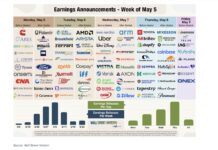The stock market is an essential cornerstone of capitalism, not a game of roulette. Well-functioning and free capital markets properly regulate the cost of capital, which is a vital input allowing companies to analyze the cost and benefit of investing and the economy to run efficiently. When investors fail to analyze assets and blindly invest in the capital markets, they distort capital valuations, misallocate capital and as a result economic prospects weaken.
The Rise In Passive Investing Strategies
The Federal Reserve (Fed), in historic efforts to increase debt and further stimulate consumption, has taken extraordinary actions to lower interest rates to levels never seen before. Low interest rates encourage consumers to borrow and spend. They also encourage investors to speculate instead of investing in more productive endeavors. From the Fed’s perspective, speculative behavior drives financial asset prices higher and generates a so-called “wealth effect”. The hope is that, as investors grow wealthier, they consume more goods and services. Additionally, the increased value of assets can be used as collateral for new debt, allowing for further growth in debt and consumption.
One of the consequences of a “managed” economy, such as the one the Fed has created, is that the normal functions of a capitalistic society erode. Capital is misallocated in a behavioral response to policy, and asset price inflation emerges in a divergence from economic fundamentals. One of the manifestations of this reaction by investors is the recent rise in popularity of passive equity investing. The mindless style of passive investing has implications that few investors appear to consider. It is important for investment managers to understand the consequences of passive investing. The sizeable and growing source of demand for equities due to interest in passive strategies may generate a short-term boost to valuations, which helps explain the cheerleading, but the intermediate to longer-term effects seem destined to be quite damaging.
Passive Investing is in Favor
Passive index strategies are all the rage. Investors, desperate for “acceptable” returns are investing in funds whose value is directly linked to stock market indices. Unlike active funds, indexed funds do not perform investment analysis and are not looking for sectors or companies that offer greater return potential than the market. They do one thing, and that is replicate a particular equity index.
A recent Wall Street Journal Article entitled “The Dying Business of Picking Stocks” reported that “Over the three years ended Aug. 31, investors added nearly $1.3 trillion to passive mutual funds and their brethren—passive exchange-traded funds—while draining more than a quarter trillion from active funds, according to Morningstar Inc.”
This exodus from actively managed funds is likely occurring for two primary reasons. For one, management fees on passive funds are low as the funds do not require investment analysis. In fact, an excel spreadsheet with a few lines of macro coding can replace a traditional portfolio manager. The WSJ article found that fees are almost eight times higher for active funds than passive ones (.77% vs. .10%). Secondly, and probably more significantly, passive funds have recently outperformed actively managed funds. In the aforementioned article, the WSJ found that over the last five years a meager 11.2% of U.S. large-company mutual funds (actively managed) outperformed the Vanguard 500 passive index fund.
Consequences
Poor Valuation – Since the great financial crisis (2008), the Fed’s zero interest rate policy has effectively pushed investors into riskier assets in efforts to earn “respectable” returns. This investment approach, also called yield chasing, is a topic we have covered in prior articles. In “Mm Mm Good”, for instance, we showed how the stock price of Campbell’s Soup Company (CPB) trades at a valuation traditionally associated with high growth firms. This has occurred despite less than 1% annual revenue growth for CPB over the last 25 years and little reason to suspect that revenue growth will improve in the future. In the article, we deduce that fundamentals offer no case for what is motivating investors and thus, recent performance is more likely due to demand for dividend yield.
Also Read: Earnings Magic Exposed: Wall Street’s Game Of Expectations
In retrospect, we left out an important part of the story. Another source of demand for CPB stock is passive index investors. Many of these investors have no idea or concern that CPB is trading at valuations associated with high growth. In fact, most of them probably do not even know that they are investing in the company at all.
This highlights a much larger problem. As money flocks into passive strategies, the cash flows are affecting the valuations of companies. In CPB’s case, its valuation is not rising because of news and data but due to the gaining popularity of passive funds. Typically, market index changes are the result of the movement in underlying constituents. Today, market index changes are the driver of the underlying constituents.
When investors disregard valuation metrics and instead bet on overall market direction they are taking a serious leap of faith. To quote Jesse Felder of the Felder Report – “Embracing passive investing is exactly this sort of ‘cover your eyes and buy’ sort of attitude. Would you embrace the very same price-insensitive approach in buying a car? A house? Your groceries? Your clothes? Of course not. We are all very price-sensitive when it comes to these things. So why should investing be any different?”
Economic Inefficiencies- As mentioned, passive investing requires little homework. Therefore, regardless of whether a company within an index is rich or cheap, its price will be swayed by passive investors. The more popular passive investing becomes, the more influence passive investors have, and the more commoditized pricing becomes. In other words, the prices of underlying stocks will increasingly rise and fall together in correlation with the market and not based on their individual merits.
Efficient markets rely upon investors performing proper fundamental analysis and buying what they believe to be cheap while selling what they believe to be rich. Over time, these individual decisions in aggregate lead to equity prices that tend to reflect consensus expectations with regard to the growth and return potential of a company. This does not mean prices are fairly valued at all times, but it does mean the collective wisdom of the market has weighed in on the risks and rewards and assigned an appropriate market valuation.
Efficient markets differentiate between “good” companies and “bad” companies. As such, they dictate the relative costs of capital for all public companies. For instance, well run companies with high growth potential are rewarded with a lower cost of capital which makes it cheaper and easier for these companies to invest in their own future. Conversely, poorly managed firms with few growth prospects have a higher cost of capital and are not as easily able to make such investments. This form of corporate Darwinism allows for more productive companies to prosper and helps eliminate those companies that are not economically viable. Without this function, investment dollars are poorly allocated towards unproductive projects. As we have repeatedly stated, lower productivity growth results in lower profits, wages, and weaker economic activity in the long run.
Summary
As the appeal of passive index funds increases and such funds garner a larger portion of investors’ dollars, the distortions to valuations and cost of capital will intensify.
A quote from the aforementioned Wall Street Journal article sends a stern warning. “It is time to acknowledge the truth,” said a March shareholder letter from Cohen & Steers Inc., manager of real-estate and other specialized active funds. Stock picking in its current form “is no longer a growth industry.” Active-fund firms that don’t “position themselves for the sea change” will be “relegated to the dustbin of history.”
That quote appears to be a startling endorsement in support of investor negligence. Nobody is going to ring a bell at the top of a market, but there are plenty of warped investment strategies and narratives from history that serve the same purpose — remember internet companies with no earnings and sub-prime CDOs to name two. Investors need to be cognizant of them and understand why the chorus of arguments in favor are short-sighted and flawed. The meteoric rise in passive investing is one such “strategy” sending an important and timely warning.
Thanks for reading.
Twitter: @michaellebowitz
Any opinions expressed herein are solely those of the author, and do not in any way represent the views or opinions of any other person or entity.









